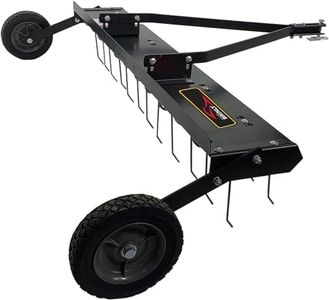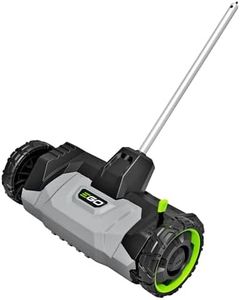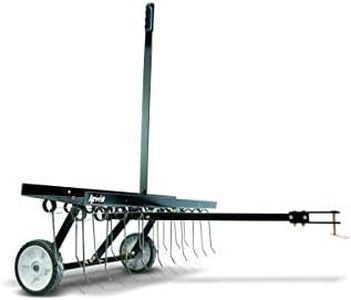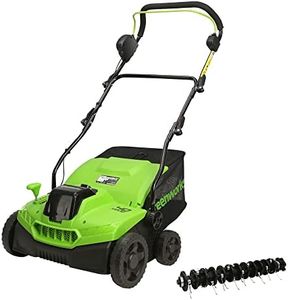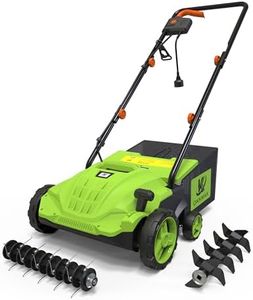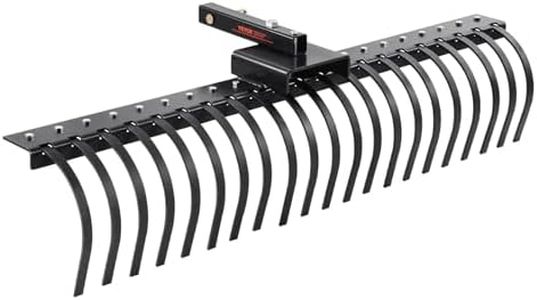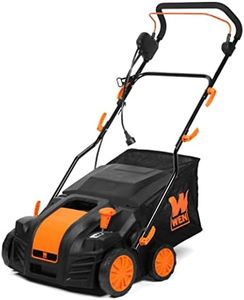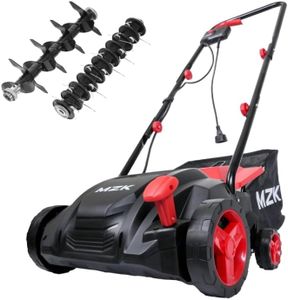We Use CookiesWe use cookies to enhance the security, performance,
functionality and for analytical and promotional activities. By continuing to browse this site you
are agreeing to our privacy policy
10 Best Dethatchers
From leading brands and best sellers available on the web.Buying Guide for the Best Dethatchers
Choosing the right dethatcher can transform how your lawn looks and thrives. Dethatchers help remove the thick layer of dead grass, roots, and debris, known as thatch, that sits between your healthy grass and the soil. Too much thatch can suffocate your lawn by preventing water, nutrients, and air from reaching the roots. When choosing a dethatcher, it’s important to think about your lawn size, the type of grass, and how often you plan to use it. With the right dethatcher, you’ll make lawn maintenance more effective and less tiring.Type (Manual, Electric, Gas-Powered)The type of dethatcher refers to how it is powered and operated. Manual dethatchers are handheld tools, electric models plug into an outlet or use batteries, and gas-powered ones use fuel engines. Manual models are best for small lawns and light work because they are not as powerful and require more effort. Electric dethatchers are a comfortable pick for medium-sized lawns as they balance power and convenience, while gas-powered ones are ideal for large lawns or heavy thatch because they offer the most power and can run without worrying about cords or batteries. Your lawn’s size and the physical effort you want to put in are key in choosing the right type for you.
Working WidthWorking width is how wide of a path the dethatcher can cover in one pass. Smaller widths (10–14 inches) make the dethatcher easier to maneuver and are useful for tight spaces or smaller yards. Medium widths (15–18 inches) offer a balance of coverage and ease for average lawns, while wider models (19 inches and up) are more efficient for big or open lawns, reducing the time needed to cover the whole area. Consider the size and layout of your lawn before deciding; narrow widths work best with many obstacles, while wide widths suit open, flat areas.
Tine Material and DesignTines are the prongs or blades that pull up and remove thatch. They can be made of metal or durable plastic, and they come in different shapes like spring or fixed blades. Metal tines last longer and are more effective for thick or tough thatch, while plastic tines are fine for light maintenance and softer lawns. If you have a dense or older lawn, go for sturdy metal tines, but for gentle upkeep and younger grass, plastic tines might be enough.
Adjustable Depth SettingsDepth settings control how deep the tines reach into your lawn. Shallow settings are suitable for surface debris and light dethatching, while deeper settings are for removing heavy thatch. If your thatch layer is thick or your lawn is compacted, having the ability to go deeper is useful. Adjustable depth makes the tool more versatile, allowing you to do both gentle upkeep and heavy-duty cleaning. Consider how thick your thatch usually gets and look for models with easy depth adjustment if you want flexibility.
Collection BagSome dethatchers come with a built-in collection bag to catch the debris as it’s pulled up, while others leave the material on the lawn for you to rake up later. A collection bag saves time and reduces cleanup efforts, which is especially helpful for larger lawns or if you want a tidier process. If you don’t mind extra raking, or your lawn is small, skipping the bag may be fine, but for bigger jobs and convenience, a collection bag is a helpful feature.
Weight and ManeuverabilityThe weight of a dethatcher affects how easy it is to push or carry, especially over uneven ground. Lighter models are simpler to handle and store, making them better for small or awkwardly shaped lawns. Heavier models can be more stable and powerful, but require more effort to operate. Think about your physical ability and the terrain; if you have slopes or lots of obstacles, a lightweight, nimble dethatcher may be more enjoyable to use, while heavy-duty models are suitable for flat, open areas.
